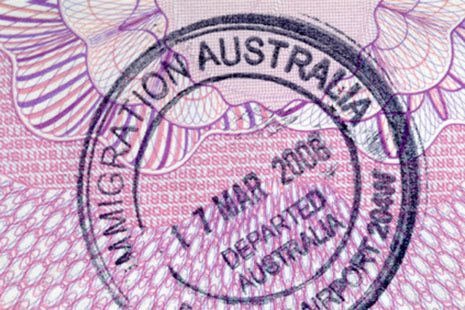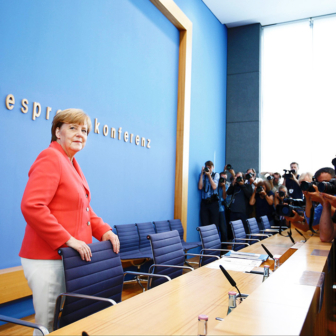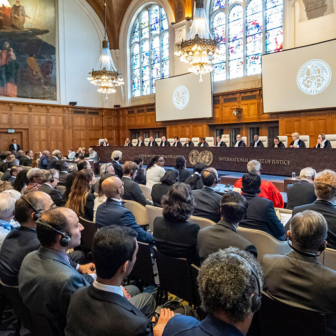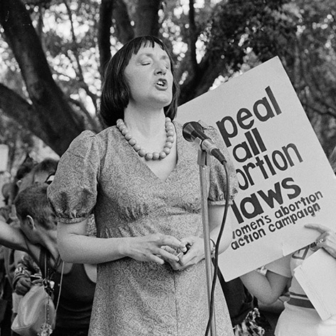IN SEPTEMBER this year Mohammed Hussain, an Afghan man, was kidnapped, tortured and beheaded in a province south of Kabul by gunmen believed to be the Taliban. Witnesses say he was thrown down a well in front of family members; a hand grenade, thrown in behind him, decapitated him. A few years earlier, Mr Hussain had sought asylum in Australia but was found not to be a refugee and was returned home. Although he had articulated his fears about what would happen to him if he were returned to Afghanistan, it was said that he did not meet the legal definition of “refugee,” and was therefore not a person to whom Australia owed protection obligations.
Under international and Australian law, “refugees” are people who are outside their country of origin, who have a well-founded fear of persecution on account of their race, religion, nationality, political opinion, or membership of a particular social group, and whose own government is unable or unwilling to protect them. Australia has an obligation not to send refugees back to places where they are at risk of such treatment. To do so would violate the international law principle of non-refoulement – the principle of non-return.
The Refugee Convention, adopted in 1951, is the international treaty setting out the refugee definition. Although it can be described as one of the foundational United Nations human rights treaties, international human rights law has evolved extensively since that time to become a significant and substantial body of law. Courts around the world have recognised that refugee law needs to be interpreted in light of those developments, which inform and extend the meaning of terms like “persecution.” Additionally, the principle of non-refoulement has been expanded under human rights law. The result is that governments are not only prevented from removing people to face persecution, under the Refugee Convention, but they are also prohibited from sending people to places where they risk being tortured, exposed to cruel, inhuman or degrading treatment or punishment, or subjected to the death penalty or arbitrary deprivation of life. These obligations arise under treaties such as the Convention against Torture and the International Covenant on Civil and Political Rights, which Australia has voluntarily ratified and is duty-bound to respect as a matter of international law.
In Canada, the European Union and (shortly) New Zealand, these extended non-refoulement obligations have been codified in legislation. For its part, the United States has codified non-removal to torture. The effect is to require decision makers to first assess an asylum seeker’s protection needs under the Refugee Convention, and if the refugee definition is not met, to go on to assess particular protection needs arising under human rights law. This practice is known as “complementary protection” because it describes obligations that are complementary to those assumed under the Refugee Convention.
The list of human rights violations, above, that may give rise to a non-refoulement obligation is not exhaustive, and nor, therefore, is the list of treaties under which they might arise. The House of Lords, for example, has suggested that a flagrant violation of any human right could amount to the kind of ill-treatment to which governments are prevented from removing people. The member states of the European Union have further agreed not to remove civilians facing a serious and individual threat to their life or person by reason of indiscriminate violence in situations of international or internal armed conflict.
On the whole, Australia takes a comparatively comprehensive and broad approach to interpreting the refugee definition. But some people still fall outside the definition and are at risk of serious harm if removed. Unlike in the European Union, Canada, the United States, and (shortly) New Zealand, there is no legislative basis in Australia on which a person who fears torture, for example, can claim protection. Unless the harm feared also satisfies the Refugee Convention criteria – “persecution” carried out because of the individual’s race, religion, nationality, political opinion, or membership of a particular social group – Australian decision makers have no power to make a determination based on the torture claim. Although an individual fearing torture could go on to appeal to the immigration minister to exercise his discretion under section 417 of the Migration Act to permit him to remain in Australia, the minister is not required to entertain the claim.
This is why the section 417 mechanism is not an adequate fall-back system. First, the discretion is non-compellable, which means that the minister does not have to even consider the claim. Secondly, the discretion is non-reviewable, which means that neither a decision refusing to consider the claim, nor a negative decision on the substance of the claim, can be appealed. Thirdly, the reasons for decisions are not made clear, which means that the decision making is non-transparent. Fourthly, even though the minister has a list of guidelines against which the claim ought to be considered – referring to protection needs arising under international human rights treaties – it is not mandatory for he or she to take those instruments into account. And fifthly, it is a grossly inefficient way of determining such claims. A section 417 application can only be lodged after the claimant has been refused refugee status by the primary departmental decision maker and has been unsuccessful on appeal to the Refugee Review Tribunal. This may mean that people are forced to take unmeritorious refugee claims through the review system in order to trigger a right to apply for ministerial intervention. It postpones consideration of pertinent issues until the very end of the determination process, rather than dealing with them at the beginning, and this means that section 417 applications take up a considerable amount of the minister’s time.
This discretionary approach places Australia at risk of breaching its non-refoulement obligations under international law. This not only impacts significantly on the lives of individuals who may be subjected to refoulement, but it may also undermine Australia’s international standing through Australia’s failure to fulfil the commitments it has made to other parties to the relevant human rights treaties.
A well-documented example of the inadequacy of the Australian system is the case of Mr Sadiq Shek Elmi, taken to the United Nations Human Rights Committee in 1998. Mr Elmi was a Somali national from the non-ruling Shikal clan who had sought asylum in Australia but was found not to be a refugee. He claimed that if he were returned to Somalia he would be at risk of being detained, tortured, and possibly executed. As a member of the Shikal clan, and the son of a Shikal elder, Mr Elmi and his family had been targeted in the past by the ruling Hawiye clan. His father and brother had been executed, his sister raped and the rest of the family forced to flee and constantly move from one part of the country to another in order to hide. Mr Elmi also feared that because he had been overseas the Hawiye clan would think he had money, which they would try to extort through torture. Evidence was produced that Somalia had a pattern of massive human rights violations and that torture was frequently used.
Neither the Department of Immigration nor the Refugee Review Tribunal had accepted that Mr Elmi was a refugee because, in their view, he did not face persecution on a Refugee Convention ground. There was no legislative basis on which he could seek protection on the grounds of torture, and despite a request for ministerial intervention under section 417 of the Migration Act the minister refused to consider exercising his discretion.
The Committee against Torture examined the evidence in Mr Elmi’s case and concluded that he would be in danger of being tortured if Australia were to send him back to Somalia. It said that Australia had an obligation, in accordance with article 3 of the Convention against Torture, to refrain from forcibly returning Mr Elmi to Somalia or to any other country where he would be at risk of being expelled or returned to Somalia.
But the committee’s decisions do not legally bind governments. Generally, political pressure and international embarrassment are sufficient to encourage governments to adhere to the committee’s views. In Mr Elmi’s case, however, the Australian government’s response was to permit him to reapply for protection as a refugee in Australia. In other words, it instigated the refugee determination process all over again, despite the fact that the Department of Immigration and Refugee Review Tribunal had previously held that Mr Elmi was not eligible for a refugee protection. Mr Elmi was ultimately removed from Australia. Had Australia had a system of complementary protection in place, Mr Elmi could have had his claim considered on the ground of torture from the outset.
Fortunately, things look set to change in Australia. In November this year, the Australian government released a draft model for a system of complementary protection. The system would be based squarely on Australia’s international obligations under the Convention against Torture and the International Covenant on Civil and Political Rights, and would provide beneficiaries with the same status and rights as refugees receive in Australia – an advance on the position in the European Union and the United States. Equality of status is important because it sits most comfortably with international human rights law norms, in particular the principle of non-discrimination. It is also procedurally more efficient, avoiding appeals to “upgrade” status, and it provides a principled and humane policy response to people who have experienced serious harm and are looking to re-build their lives in a safe environment. Under the model, claimants’ protection needs would be assessed firstly against the refugee definition, and only if that definition were not met would the complementary grounds be considered. This means that decision makers would continue to rigorously test and develop the bounds of the refugee definition in accordance with evolving human rights norms and comparative jurisprudence, but would also have additional grounds on which they could grant protection in accordance with Australia’s international obligations. This would reduce the number of section 417 applications going to the minister, although that avenue would remain open for compassionate and humanitarian cases falling outside the refugee or complementary protection criteria.
Without being privy to all the details of Mohammed Hussain’s case, it is not possible to say with certainty whether or not he would have been granted protection in Australia under a complementary protection scheme. What is clear, however, is that had he been able to produce sufficiently credible evidence that he was at risk of torture or cruel, inhuman or degrading treatment in Afghanistan, he would have been granted protection in Australia under the proposed complementary scheme. He would not have had to show that such treatment was “on account of” his race, religion, nationality, political opinion, or membership of a particular social group, or characterise that ill-treatment as “persecution.” In other words, he would have had the opportunity to present his claim based on his specific fear of torture, and have it determined in accordance with international human rights law standards.
In enabling this process, Australia would have fulfilled its obligations under international law by ascertaining, in a systematic manner and in accordance with due process, that individuals at risk of serious harm are not returned to danger. Importantly, the draft Australian model – which still needs ministerial, cabinet and budgetary approval before it can be implemented – envisages that beneficiaries of complementary protection will be granted the same rights as Convention refugees, thus enabling them to live in safety and dignity within the Australian community. •




